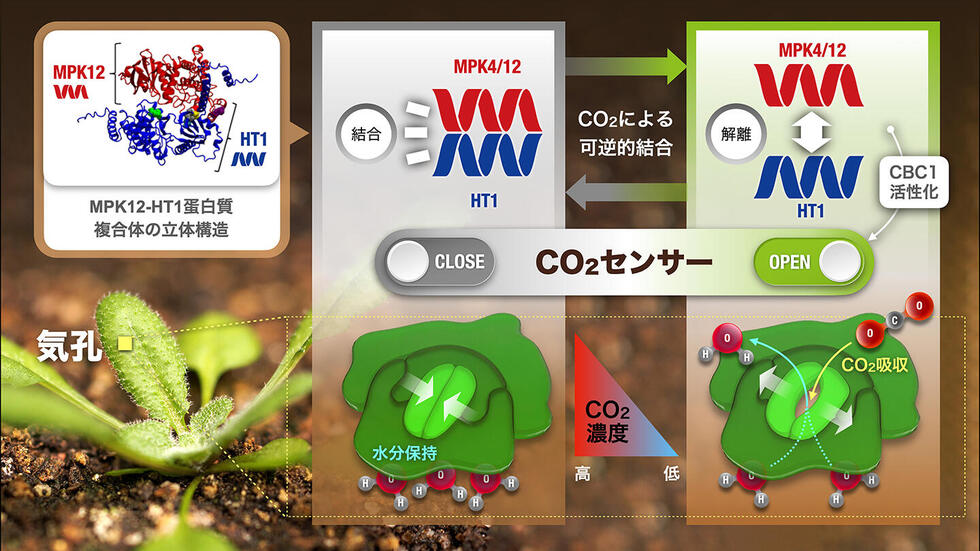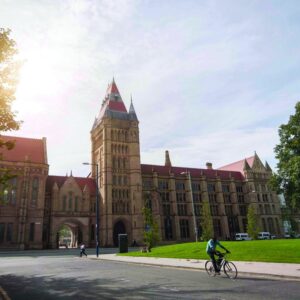
Project Associate Professor Yohei Takahashi of the Tokai National University Institute Nagoya University Institute for Transformative Bio-Molecules (WPI-ITbM * ) and Professor Julian Schroeder of the University of California San Diego (U.S.A.) have developed a model plant, Arabidopsis thaliana Note 1). Analysis using , showed that plants sense changes in carbon dioxide (CO 2 ) concentration by binding or dissociating protein kinases Note 2) encoded by two types of genes. for the first time in the world .
Plants take in CO 2 , a material for photosynthesis, and transpire water through small pores on the body surface called stomata Note 3) . Stomata open and close rapidly in response to various environmental stimuli, and play an important role in plant CO 2 absorption and efficient water use. In this study, we found that two proteins (protein kinases MPK4/12 and HT1) that work in the stomata of the model plant Arabidopsis thaliana bind to each other in a CO2-dependent manner . We demonstrated that the MPK4/12-HT1 complex senses CO 2 and causes stomatal opening and closing . The results of this research are a long-unknown plant CO2 sensor .
*4) was identified and its mechanism of action clarified, and it is expected to serve as a starting point for the future development of new technologies aimed at enhancing the water-use efficiency of plants *5) and atmospheric CO2 absorption .
The results of this research were published online in the American scientific journal “Science Advances” on December 8, 2022 at 4:00 a.m. (Japan time).



